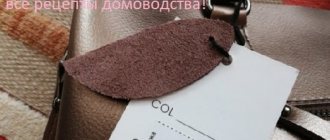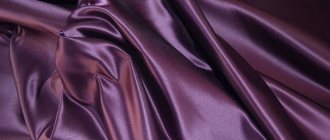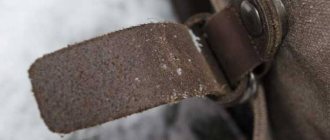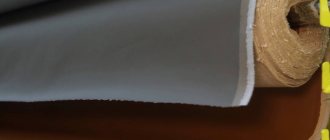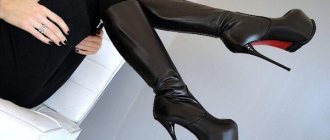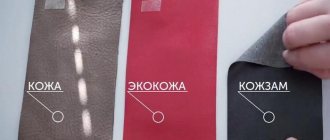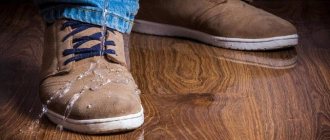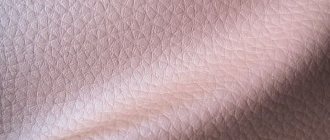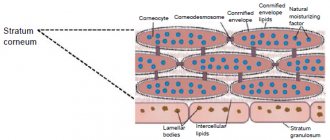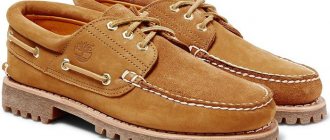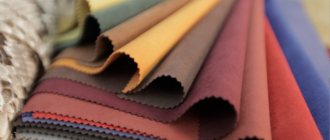What is composite leather
The material, which is made by pressing and further bonding tannery waste, is called composite leather. Its production may vary, but the essence remains the same:
- A single fabric is formed by gluing together small pieces of leather remaining after production.
- The material is bound into a single whole without the use of glue, by pressing.
- Small scraps are heated in hot water and rolled into a single sheet.
The result of processing tanning residues is composite leather. The fact that this material is natural is confirmed by the algorithm for its production. In this case, the canvas can be painted, polished and even varnished. The material is malleable, so you can give it a suede look, embossed or metallize it.
What is composite leather made from?
To understand the value and characteristics of the material, you need to know its composition. Natural composite leather can be produced in various ways. Various wastes are used:
- Old leather products that have fallen into disrepair and cannot be restored. At the same time, leather fibers are not used for the production of new goods.
- Small scraps and strips that remain after finishing the main product.
- Tanning dust, or flour, is suitable for making artificial suede.
However, composite leather is not made from raw animal skin trimmings and old shoes.
How to distinguish composite leather from genuine leather
Pay attention to the product labeling. Natural products from domestic manufacturers are designated as “natural leather”. Its foreign members proudly wear the label vera pelle, echtleder, genuine leather, cuir, bonded leather, reconstituted leather, blended leather on the label. Artificial “leather” will mean this:
- artificial leather (artificial leather);
- nitroartificial leather (nitro artificial leather);
- synthetic leather (synthetic leather);
- films (film material.
Current methods
Since in the modern market you can often buy one thing and “run into” another, let’s figure out how composite leather differs from genuine leather.
- Pay attention to the product label. The factory manufacturer will definitely make a note accordingly. And this, by the way, will be the first indirect sign of good quality of the composite product. Although in the current market realities you should not trust tags and material samples 100% of the time.
- Look at the picture. Identical repeating elements, pores directed in one direction, indicate that the “natural” structure was created by an artificial method.
- Try to gently pull the product. Natural material is slightly springy, it is always at least a little elastic. You already know that composite leather is a pressed material, so it is impossible to stretch it, it is “oaky”.
- The article was written for the website Chistyulya.info. All other reprints are content theft!
- Press down on the surface with your fingernail. A mark will quickly appear on natural leather, which will straighten out only after some time. It is not easy to put such a mark on the surface of composite leather, because it is much harder than natural leather. And this trace immediately disappears.
- Hold the material in your hands. If it warms up to your body temperature in a minute or two, it's natural. The skin remains uncomfortable and cold.
- Due to the pressing technology, a smooth back side is formed. Whereas genuine leather is velvety on the inside (has a fringe). It should be noted that this feature does not always work: technologies make it possible to form a “suede” backing on sheets of pressed leather. This happens rarely, but it does happen.
- Your finger will glide easily over the surface of the pressed leather. Your finger will not slide on the surface of genuine leather.
- The edges of pressed leather are always a little fuzzy. Look at the example in the picture - lint is visible in the holes of the strap. This is not the case with products made from full grain leather.
Other methods of diagnosing genuine or pressed leather are often misleading. Thus, natural leather often has a chemical smell, while high-quality pressed leather emits a noble aroma of expensive natural material. Or how about some advice about testing the naturalness of leather with fire? I can’t imagine how one could pull off such a trick in a store.
Etc. Focus on the real and proven methods described above!
Video: composite leather, what kind of material it is.
Industry of application
The main area of application of the material in question is the footwear industry. It is important to clearly understand what composite leather is. In shoes, it cannot play the main role, otherwise the product will be short-lived and impractical. However, it is successfully used for the production of insoles and soles. The material is also suitable for making the back of boots or shoes.
In addition to the footwear industry, composite leather has found wide application in other industries. It is most often used:
- in the production of suitcases, bags and briefcases; in this case, only the inner part can be made of this fabric;
- for making handles of bags or belts;
- in the manufacture of technical goods: seals, cuffs.
The benefits of leather from waste
Composite leather has undoubted advantages. That this material is quite durable and natural can be understood by reading its composition. Only natural leather scraps or flour obtained by tanning it are used.
A significant advantage is its appearance. At first glance, it is difficult for the average consumer to distinguish whether these are real strips of leather or glued particles. Most budget bags and shoes, the sellers of which assure them of their naturalness, are made of composite leather. Her appearance is attractive. Coloring options make the products aesthetically pleasing. In addition, you can make a material similar to the skin of any animal or suede.
Flaws
Many inexpensive bags and boots, the sellers of which convince of their naturalness, are made precisely from this material. The disadvantages include:
- lower level of strength due to the fact that it is pressed;
- Over time, shoes and boots begin to get wet;
- due to the lack of integrity of the fabric, the products will not warm in frosty conditions; the acceptable temperature is less than -15°;
- boots cannot be used for wearing in the rain or walking on rough terrain.
Pressed leather upper
Differences between leather and composition option
Composite leather is 100% material from tannery waste. However, it differs from its natural counterpart. The material does not breathe and does not stretch, because it is obtained by gluing or pressing. Clothes and shoes made from it are much cheaper, but will last a maximum of two seasons.
The residues used are so small that they are not suitable for the production of a full leather product. However, the naturalness of the material makes the cost higher than that of leatherette.
Other types
Different types of leather are necessary, because natural primary raw materials are not enough for everything. Not all products require such an expensive fabric.
Vinyl leather
This is a fabric with a porous or uniform one-sided PVC coating. How it is made:
- Preparation of the fabric base. The type of fabric will be determined by subsequent properties.
- Treatment of the base with solutions and polymer melts.
- The final finishing with the application of a pattern adds texture.
What is good about vinyl leather:
- resistance to abrasion, scratches, mechanical stress;
- tensile strength;
- resistance to ultraviolet radiation, moisture;
- tolerates temperature changes;
- does not deteriorate in chlorinated and sea water;
- tolerates treatment with disinfectants, ingress of oils and gasoline.
What is it used for:
- shoes, haberdashery;
- production of furniture of different price segments;
- metal door trim;
- finishing of residential, office and utility premises.
Vinyl leather is the material of the future. At a relatively low cost, it has good characteristics.
Boiled
Rigid, durable material, yet lightweight. Boiled leather is made by vegetable tanning. After this, they are sent into an adhesive solution or hot water. Oil, wax, rosin, and resins are also used.
Then fattening and painting occurs. At the end it is formed, embossed and dried. Previously, this type of leather was used for cases, sheaths, and sheaths. In antiquity and the Middle Ages for shields and armor.
Stamped
Modern saffiano is stamped leather. It is made in a special way from calf and sheep skins. Often used for making bags, briefcases, and cases. The products repel dirt and do not require special care. Resistant to mechanical damage and scratches.
Textured
It is pressed under special plates with temperature effects. This is necessary for alignment and elimination of defects. Textured matter has some kind of relief, pattern, or imitation of reptile skin.
Printed
Natural, but has a uniform pattern. Easily confused with leatherette. Printed leather allows you to apply any patterns, especially if it is a light shade. It is often used to imitate exotic leathers.
Recycled
It is made almost like a regular pressed one. Latex is used to glue the particles together. Recycled leather is used to make fabric pieces of any size. The finished canvas is varnished, painted, and the structure is changed if desired. Can be made in the form of crocodile skin.
The material is often used for notebooks, diaries, and document covers. Can be embossed and used for applying various symbols and inscriptions.
Important
To preserve the original appearance of any structural leather, such as embossed or crinkled leather, it is worth periodically impregnating it with a special product. This is useful for any natural leather, and for textured leather it is a necessary measure.
Reviews:
- Sergey, 32 years old: I bought inexpensive boots, the seller assured me that they were genuine leather. They burst, the season didn’t last. I read it on the Internet, it turned out to be pressed leather. It seems natural, but it’s complete nonsense.
- Alina, 21 years old: student, doesn’t have much extra money. Six months ago I bought a handbag made of pressed leather. A wonderful thing for your money. But I don’t dare buy shoes. I’d rather save up and buy some good boots.
- Valeria, 29 years old: I have a wallet made of recycled leather. Beautiful, has been serving me for three years now.
What is composite leather: a mixture of natural residues and chemical adhesives. Clothes and shoes made from it are not recommended, but bags, wallets and accessories will be a good purchase.
© 2021 textiletrend.ru
